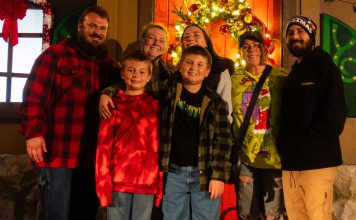For many years all I did was run. Sometimes I would stretch, a little. Sometimes I would do some yoga, a little. But mostly I just ran. If I wanted to run faster, I ran faster in training. If I wanted to run farther, I ran farther in training—longer long runs, more miles per week. I would read about cross training—do some bicycling, swimming, elliptical. Never did it. Not much anyway. I like to run. I don’t have the time or inclination to go to a pool or a gym or dust off a bicycle.
I think that a lot of runners are like me. We like to think that running is enough all by itself. Running is a great exercise, a great workout, but we get injured when we do nothing but running. Muscle imbalances. Pounding joints. Limited range of motion.
I am a slow walker. I couldn’t figure out why I was so slow—it’s just walking. During trail races, there are hills, and on big hills, you walk—it takes more energy to run than to walk at these moments, and you will need that energy later on. But every time I walk, people pass me; they pass me while they are walking. I have tried speeding up, increasing my stride rate, pushing off harder, but I still see people disappear over the crest of the hill ahead of me.
So it seems that the answer to fewer injuries, better running, and faster walking is core training. This I can handle. I need a mat and enough space on the floor to lie down. Recently I’ve been following a couple of different routines once or twice a week. Runner’s World “Fast Abs,” a program used by champion hurdler Lolo Jones and developed by Greg McMillan. Exercises that strengthen and stabilize the core muscles—transversus abdominus (deep abs), erector spinae (lower back), glutes, hamstrings, obliques, and hips.
Speed—when running faster, “the lower abs (transversus and rectus abdominus) and lower back come into play. The stronger and more stable they are, the more force and speed you can generate.”
Uphills—the glutes and lower abs help push you uphill. Hip flexors and rectus femoris (top of the thigh) and hamstrings are also engaged. Strength in these muscles stabilizes the pelvis, creating a strong platform to motor up the hill.
Downhills—strong gluteal muscles help to absorb the shock of pounding downhill and take pressure off of the quads and knee joints, which, otherwise, would take the brunt of this pressure, possibly resulting in fatigue or injury.
Endurance—near the end of the race, you are tired and wearing down; a solid core helps you maintain correct posture, which means more efficient form, therefore, less pressure on your joints.
Lateral Movement—a strong core helps provide stability and less strain on muscles and joints when you have to change direction suddenly to adapt to variations in terrain, to avoid a pothole or other obstacle on the course.
So, here are the exercises from the Runner’s World website: http://www.runnersworld.com/workouts/fast-abs
The results, so far, of my core—curriculum have been really, really sore glutes. I mean, really sore. I guess that proves how really weak they were in the first place. And, to be honest, I haven’t field tested my newly stabilized and strengthened core under field conditions—no races, yet. But I have been powering up the stairs at work—four or five stories—with no problems at all, and I’m convinced that walking from light rail to the street light, my walking speed has dramatically increased. Now, I’m looking forward to my next trail race—I plan on kicking butt.
Gotta run,
Craig Lore












